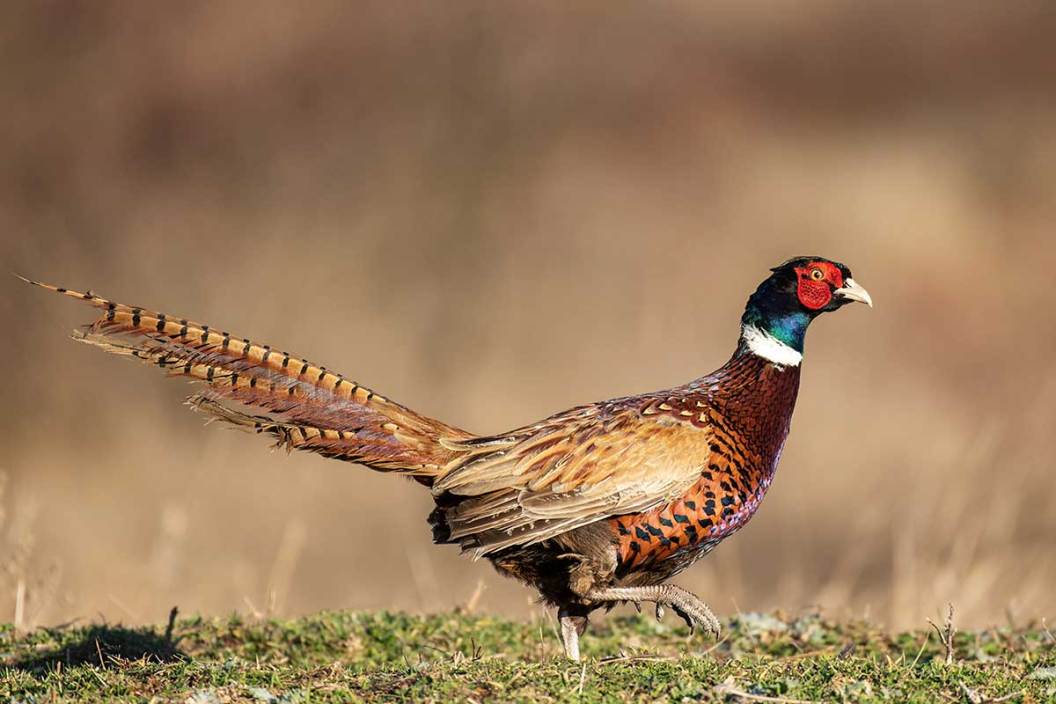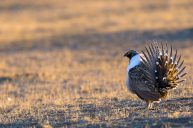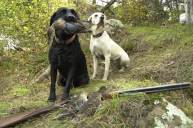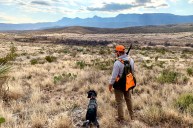Here's everything that you wanted to know about the ringneck pheasant.
The ever-popular ringneck pheasant (sometimes called ring-necked pheasant) is one of the most marketable game birds we know of in North America, but did you know that it is not a native of the continent? The incubation and hatching of pheasant chicks is now big business in the U.S. and has been for many years, but it all started with some birds shipped to Oregon in 1881.
Now, over 40 states in the union have introduced Phasianus colchicus and have some kind of ringneck pheasant rearing program to propagate and advance pheasant hunting.
One of the best reasons to do so is the very simple fact that pheasant hunting is a great starter activity for youth hunters and potential bird dog owners. The birds have established themselves with wild, reproducing populations in many states, making for a pursuit that is much more difficult, especially without a solid gun dog.
Ringneck Pheasant Identification
https://www.instagram.com/p/CW8bPAmF6m3/
Asian ringneck pheasants have come a long way since the days of their first introduction into the Willamette Valley, but their looks have remained much the same.
The inimitable rooster pheasant is one the most beautiful upland game birds that we know of with the famed white collar around its neck, but for many it is the long tail of this bird that gives it away. Now's a good time to point out that the term "ringneck pheasant" is often used to refer to the species as a whole in North America, but can also be used as a collective phrase for a number of subspecies found elsewhere.
The white ring aside, they are easily identified by the scarlet eye patch, blue-green head, and slight red wattles. Also known a cock or a rooster, the male ringneck pheasant is an excellent flier, but the most wily birds will run to escape a disturbance before they fly.
During the breeding season in the wild, the rooster will perch on a downed log or other higher location and crow a distinctive call coupled with the beating of his wings. It's a sight and sound that is hard to miss if it's happening near you.
The females, or hens, are made for camouflage, as their feathers are a much more muted and mottled brown. They also have elongated tail feathers, but to a lesser extreme than the rooster. They disappear from predators like foxes, coyotes, hawks, and owls more easily than their counterpart males.
Lifecycle and Habitat
https://www.instagram.com/p/CWq_zxbpVPK/
Pheasants are well suited to live in areas around wetlands, grasslands, dense brush, and especially agricultural areas. Farm fields and hedgerows have long since become a staple for wild pheasant populations, not to mention obvious staging areas for stocked birds to linger in.
Pheasants feed on seeds, berries, and especially insects such as spiders and beetles during the summer months. In winter, it is often leftover crops such as grains and roots that they will count on until the warmer weather arrives.
These ground-nesting birds will lay anywhere from 8 to 12 eggs or more during the spring breeding season in shallow, well hidden nests. The eggs will incubate in just a little over three weeks before hatching with the chicks following their mother for about 10 weeks.
Hunting Ringneck Pheasants
If your ideal hunt includes walks with your favorite gun dog in tall grasses and cattails, supreme views of the sunrise or the sunset during the beauty of autumn, and lots of fresh air, then pheasant hunting might just be for you.
Some may have to travel for the privilege and some may have to join a club, but the bottom line is that it is a pursuit in which little more is needed than the desire to do it, a place to go, and your favorite shotgun. Having a finished gun dog is just icing on the cake, but it is one of the best parts of upland bird hunting as you have never experienced hunting until you have watched a well-trained dog work a field for scent.
For those who are in need of a place to go, many states release pheasants onto public hunting land to give most every hunter the opportunity to try for these great game birds. Be sure to check your state's department of natural resources website for release areas and dates.
Looking for a new way to display those antler sheds? Go to Rack Hub and use the coupon code Craiger. Be sure to follow my webpage, or on Facebook and YouTube.
NEXT: EASY CROCK-POT PHEASANT STEW RECIPE




